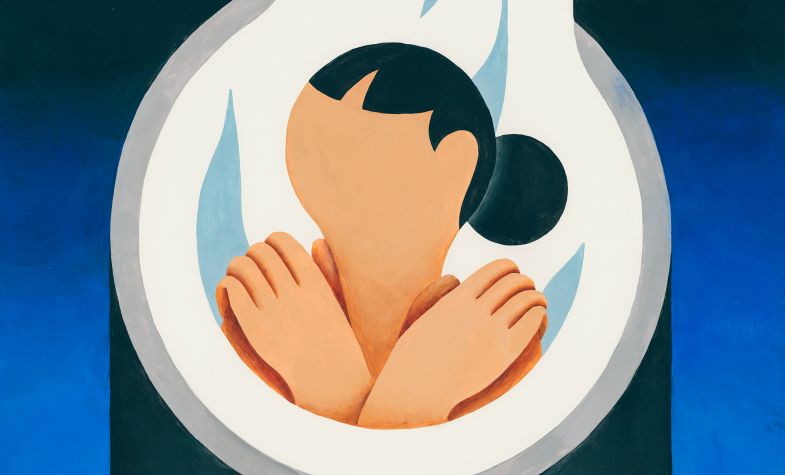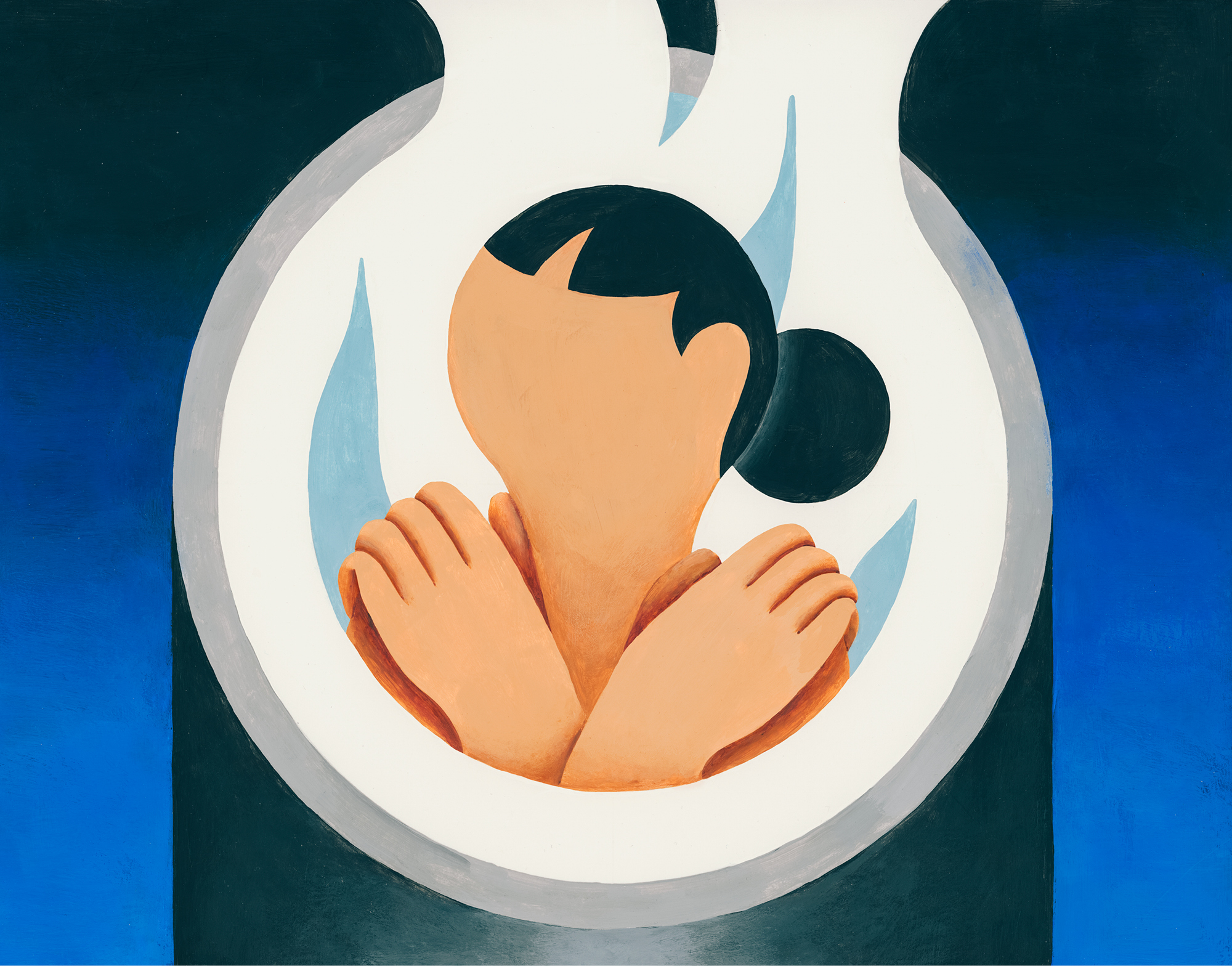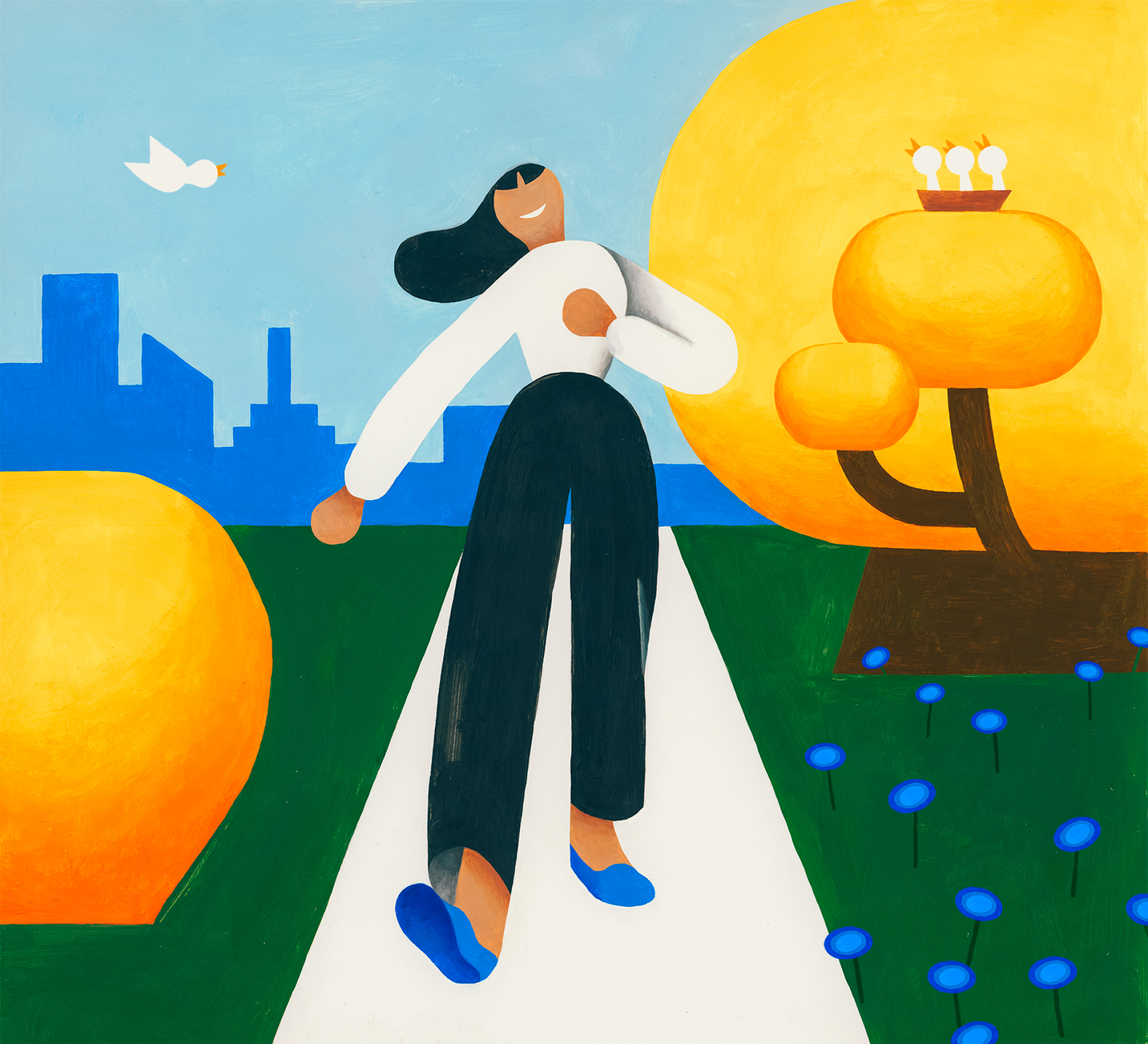WORDS
Amy Raphael
ILLUSTRATION
Roberts Rurans
You’ve only got a short lunch break, it’s already been a tough day, you didn’t have the best night’s sleep and you’re wilting at your desk. You could go to the gym, but you’d need to factor in at least 20 minutes plus time for a shower. You could drop into a meditation class and try to ignore the to-do lists buzzing around your head. Or you could spend just 180 seconds freezing your butt off.
Cryotherapy is about subjecting yourself to a blast of freezing cold air in the hope that it will help the body to recover from various injuries, alleviate various aches and pains, help regulate hormones, improve sleep and give you a burst of energy. While tennis star Andy Murray does it the old school way, immersing his battered body in a ice-filled bath for up to 20 minutes, elite athletes such as footballer Cristiano Ronaldo and basketball king LeBron James swear by cryotherapy.
Ian Saunders is co-founder of CryoAction, a UK-based company that has implemented cryotherapy systems in various football and rugby clubs. He is, of course, evangelical about cryotherapy: ‘A lot of our perception around cold is built up around immersion in cold water, which is a deep, penetrative cold. Quite frankly, if the water is just a few degrees above freezing, very few people would be tempted to jump in. At around -135 degrees, a cryochamber is extremely cold, but it’s relatively hospitable. You don’t shriek out when you walk in.’
My body is tingling all over. I feel like I have mainlined coffee and can now scale Everest
Saunders explains how CryoAction uses dual chambers to ‘treat’ its clients. ‘You walk into a pre-chamber that is normally held at a temperature of around -55 for 30 seconds and then you walk into a second chamber that is -135. You’re in there for two-and-a-half minutes. A number of things happen in those three minutes. The first is vasoconstriction: the brain realises that the temperatures involved are so extreme that it can’t distribute fresh blood to the extremities of the body. So it narrows the blood vessels and pulls the blood back into the core. It is effectively cleaning the blood using the body’s natural processes. As soon as you leave the chamber, the blood is redistributed back to the extremities.’
What happens if you nip out at lunchtime and you’re feeling anxious about work? ‘If you’re stressed out then your body will be flooded with cortisol. The process of cleaning the blood up helps to enrich it with natural enzymes. At the same time, the body is enriched with endorphins. Antioxidation is taking place and there’s an increased level of dopamine, which essentially means that when you leave the chamber, your fatigue is stripped away and then you will sleep deeply that night. There’s no two ways about it: you are chilled out.’
I am sold. My hormones are all over the place. My sleep is fractured. I can virtually feel the cortisol coursing around my body. My shoulders are knackered after decades hunched over a keyboard. One rainy spring day, I walk into an innocuous-looking place called LondonCryo, just around the corner from Liverpool Street station. I am just reading about new clients having a recommended eight sessions during the first two weeks and thereafter two a week, when a woman in her thirties races in and begs me to let her go first. Her kid is waiting in the car outside and she can’t get through the day without a session. I let her go first and, by the time I have stripped down to my knickers, put on a dressing gown, thick socks and gloves, she has been and gone.
I am led to a room with a CryoCabin in one corner. It’s a different set up to CryoAction, but uses a similar process. I step inside the cylindrical cabin and the door closes, leaving my head poking out of the top. I remove the dressing gown and give it to the woman who is monitoring my session. Am I ready? Well, no, I’m a bit scared, but it’s too late to walk away. She turns the cold on. Liquid nitrogen vapour floods the cabin. It’s fine! Hang on, it’s getting cold. How long? Only 30 seconds? My thighs hurt. So do my nipples. I want to get out. 90 seconds? I take slow, deep breaths and suddenly the three minutes is up.
My body is tingling all over. I feel as though I have mainlined coffee and can now scale Everest. There is not enough scientific evidence to prove just how much cryotherapy speeds up muscle healing and cell renewal or reduces inflammation and pain, but I can’t stop smiling as I walk, refreshed, through London’s wet streets. If it’s a placebo, it’s a damned good one.







